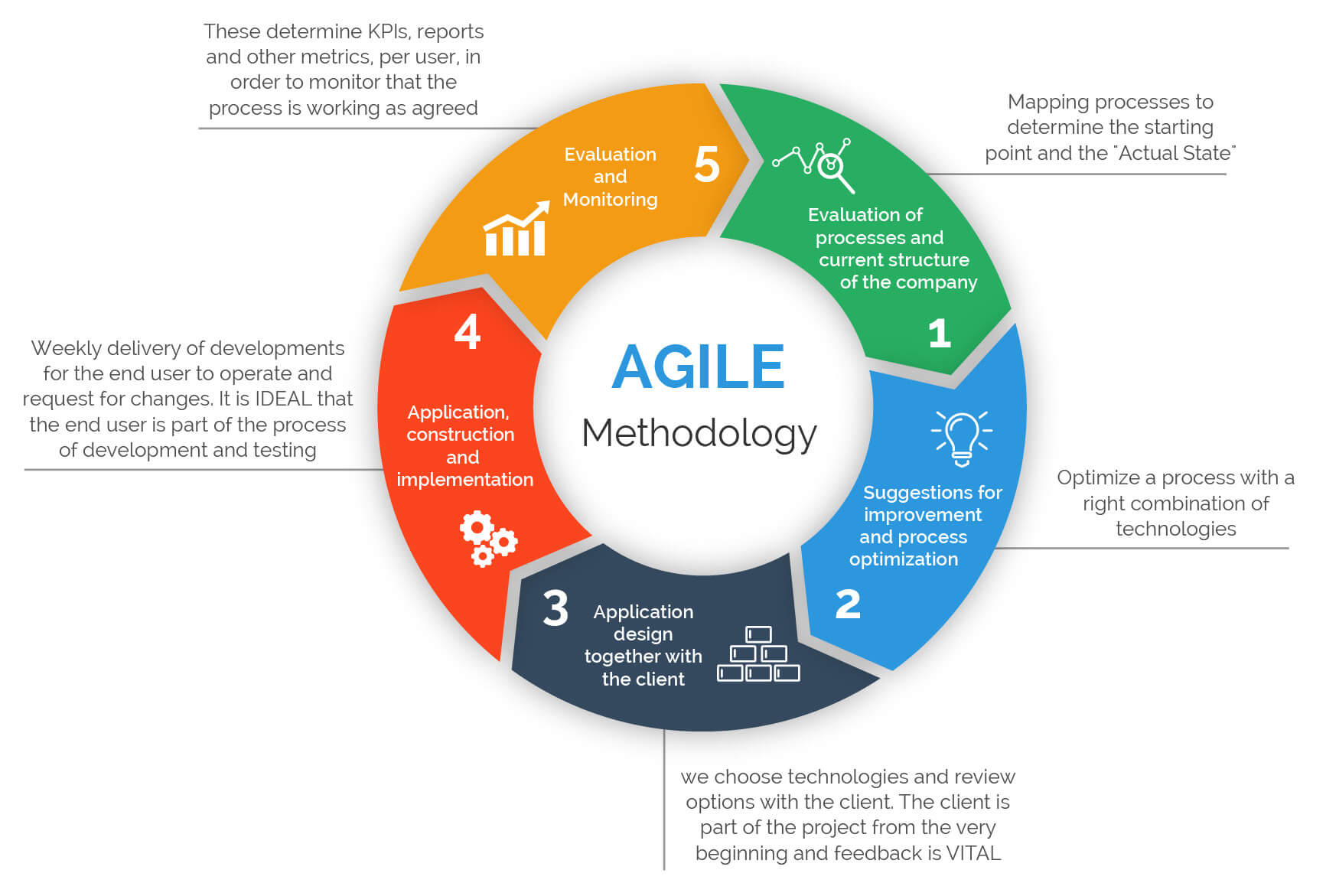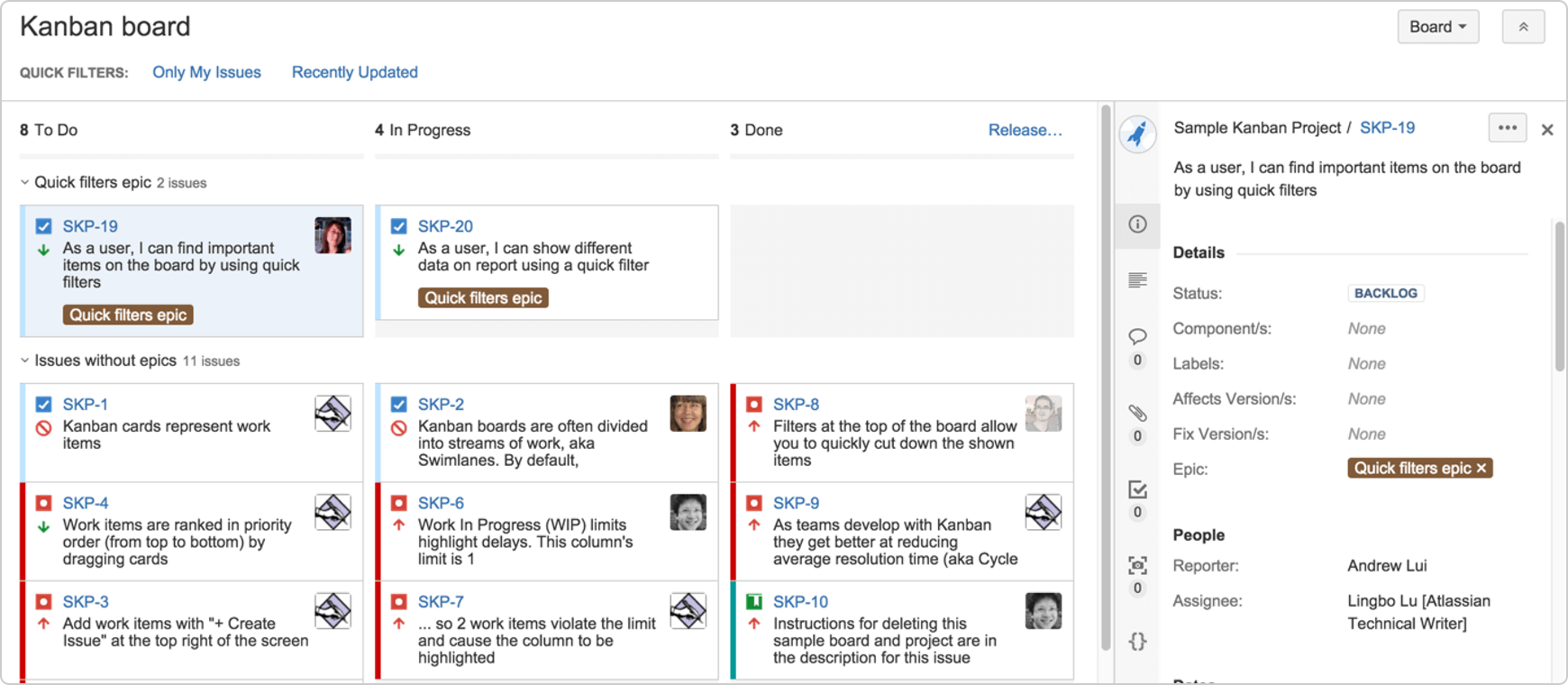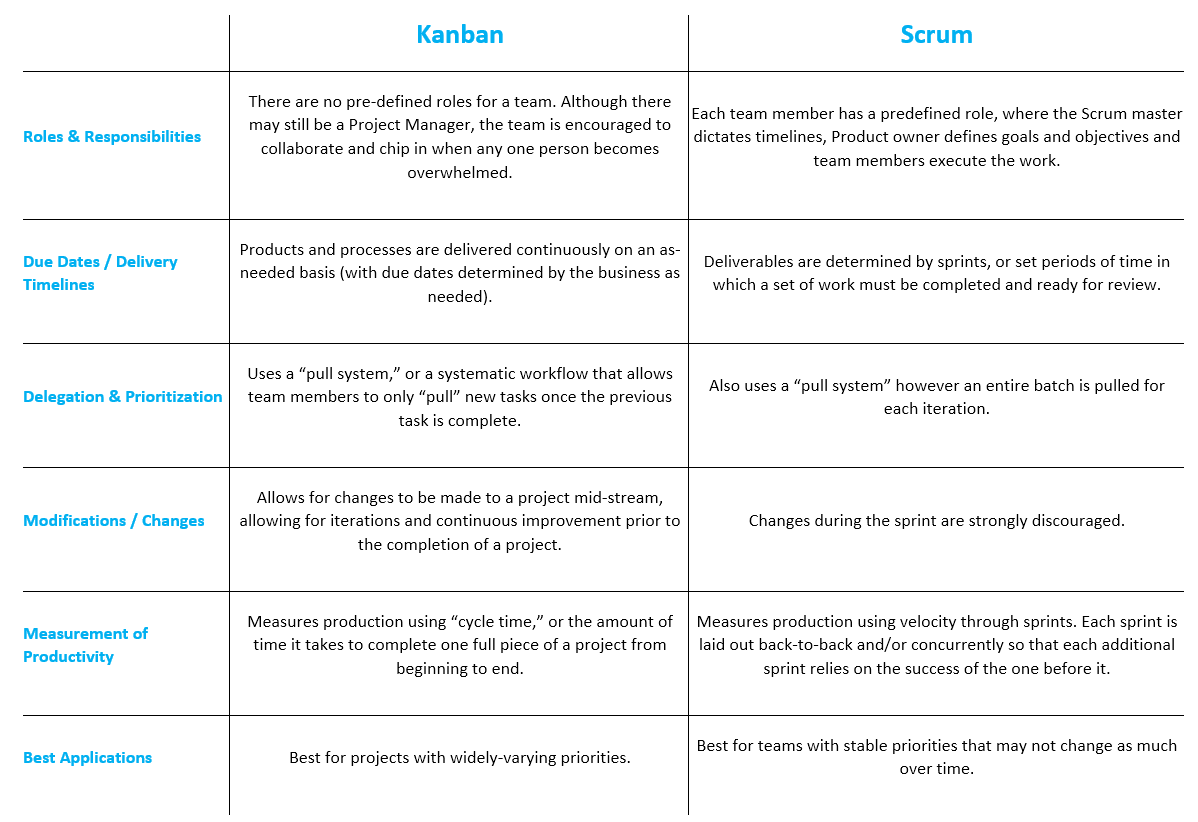In today’s competitive and dynamic business environment, Agile methodologies have steadily risen to become a trusted and preferred method of development for software teams in the software industry. Using agile methods, organizations can respond to market changes faster, deliver higher-quality products, and gain a significant competitive edge.
This led IT teams to start using agile practices and methodologies to accelerate development and respond to change on time. In everyday business, many Scrum teams also use Kanban as a visual process and project management tool. While some teams prefer to use only Scrum because of well-defined processes, many Scrum teams have adopted select principles of Kanban Agile that are useful in adding an extra layer of visibility to their projects.
When choosing between Scrum and Kanban, the individual distinction doesn’t always have to be made because Kanban and Scrum can go hand-in-hand. And if you want to be a Senior Jedi today, it’s more than beneficial to focus on both of them.
In our practice and everyday work, we can say that we have good experience in both agile methodologies (Kanban and Scrum), so let’s see the differences and benefits of using both methodologies. Hence, let’s dig deep into the advantages and disadvantages of Scrum and Kanban.

What is Scrum?
Scrum is a well-defined process framework to structure your work and one of the most popular Agile methodologies. Scrum is most often used to manage complex software and product development. It is an adaptive, iterative, incremental, flexible and effective methodology designed to focus on delivering the highest business values in the shortest time throughout a project.

When your team used Scrum methodology, then they have to work in:
- Short iterations
- Cross-functional team
- With Product Owner
- Under the counseling of Scrum Master
- Regular meetings
- Iteration planning
- Sprint reviews

What is Kanban?
Kanban is a technique for managing a software development process in a highly efficient way. The Kanban Agile methodology is a less structured methodology than Scrum. There is no process framework in this methodology. It only has an introduced model that improves the process through incremental improvements. This methodology can apply to any other methodology that you are already running.
In Kanban, we organize our work on the Kanban board. The advantages of Kanban, the process is running as:
- To Do
- In progress
- Done
Kanban management criteria are WIP (Work in progress). By managing WIP and monitoring WIP we can optimize the flow of work items.

Similarities in Scrum and Kanban
Both methodologies have several similarities:
- Both are Agile
- Both limit WIP
- Both use “pull scheduling”
- Both are focus on delivering the releasable software often and early
- Both use transparency to drive process improvement
- Both need breaking the work into pieces
- Both are based on self-organizing and cross-functional teams
- Both release plan is continuously optimized and based on the empirical data (lead time/velocity)

Scrum Benefits
The benefits of Scrum are real, especially for companies looking to accelerate time to market and move quickly in the software industry.
- Increase the quality of the deliverables
- Delivers products in short iterations
- Scrum Prescribes 3 roles PO (Product owner), SM (Scrum master) and Scrum Team
- Scrum team commits to a specific amount of work in an iteration
- It adds value to the business
- It allows the client to change the priorities and demands very quickly
- In scrum you cannot add new items to ongoing iteration
- Scrum team is Cross-functional
- Promotes a better working environment for management
- Promotes transparency and improved client relations
- Enhances the credibility with the client due to the higher product quality
- Creates motivated and inspired team members
- Scrum uses Velocity as default metric for the planning and the process improvement
Kanban Benefits
Now let’s see the benefits of Kanban:
- In Kanban Timeboxed iteration is optional
- Kanban is event-driven instead of timeboxed
- Kanban has separate cadences for planning, process improvement and release
- Commitment is optional in Kanban
- Default metric for planning and process improvement use lead time in Kanban
- Kanban teams allowed specialist, while the Cross-functional team is optional
- Kanban does not prescribe any particular item size or Diagram
- WIP limited Kanban directly (as per workflow state)
- Estimation is optional in Kanban
- Kanban allows you to add new items whenever the capacity is available
- The Kanban board can be shared by individuals or multiple teams
- Kanban does not prescribe any specific roles
- The Kanban board is persistent
- Prioritization is optional in Kanban
These are the primary Kanban benefits over Scrum.
Advantages of Scrum
Scrum framework is highly perspective. It has specific roles and ceremonies. Scrum has a lot of advantages, some are listed here.
- Scrum has more transparency and visibility than any other methodology
- It increases the team accountability
- Scrum is easy with changes. It accommodates changes
- Scrum is a cost saving development methodology
Disadvantages of Scrum
Everything has two faces. When scrum has some benefits then it also has some disadvantages. Scrum is a methodology for usually high level and experienced persons. Scrum disadvantages are listed below.
- Scrum need to be experienced and high-level persons, lack of experienced persons scrum process has some risk of scope creep
- Scrum team requires experience and committed team
- Less experienced scrum master can ruin the whole process of development
- If the task is defined poorly then the project can be lead to inaccuracies
Let’s move on to the advantages and disadvantages of Kanban.
Advantages of Kanban Methodology
Kanban is easy to learn and understand the methodology. It improves the workflow and minimizes the time cycle. Some major advantages are listed here:
- Kanban methodology increases the process flexibility
- It’s focused on continuous delivery
- It reduces the wastes from the process
- Kanban is easy to understand the methodology
- It improves the delivery flow
- It reduces the time cycle of the process
- Increased productivity and efficiency
Disadvantages of Kanban
Most of the disadvantages of Kanban methodology is due to misuse or mishandling of Kanban board. Some common disadvantages are given:
- Outdated Kanban board can lead to issues in the development process.
- Sometime a Kanban team vs Scrum team can make the board overcomplicate.
- Lack of timing is another disadvantage because there is no timeframes are associated with each phase.
These three are the main Kanban disadvantages.
Conclusion
We’ve seen all the Kanban advantages and disadvantages, but also the essential Scrum methodology advantages and disadvantages, so now it’s time to make the conclusion.
Looking at both Agile software development methodologies it should be more clear what to introduce and when. If your organization is really stuck and needs a fundamental shift towards a more efficient and productive process, Scrum seems to be more appropriate. If you already have working processes, that you want to improve over time without shaking up the whole system, Agile Kanban should be your tool of choice.
Both methodologies have their pros and cons. If your company is not using Agile software development methodology, then Scrum is a good chance for your team. Switching your organization to Scrum is a beneficial process considering the advantages of Scrum over Kanban. It will remove your old habits and change them into effective ones.

